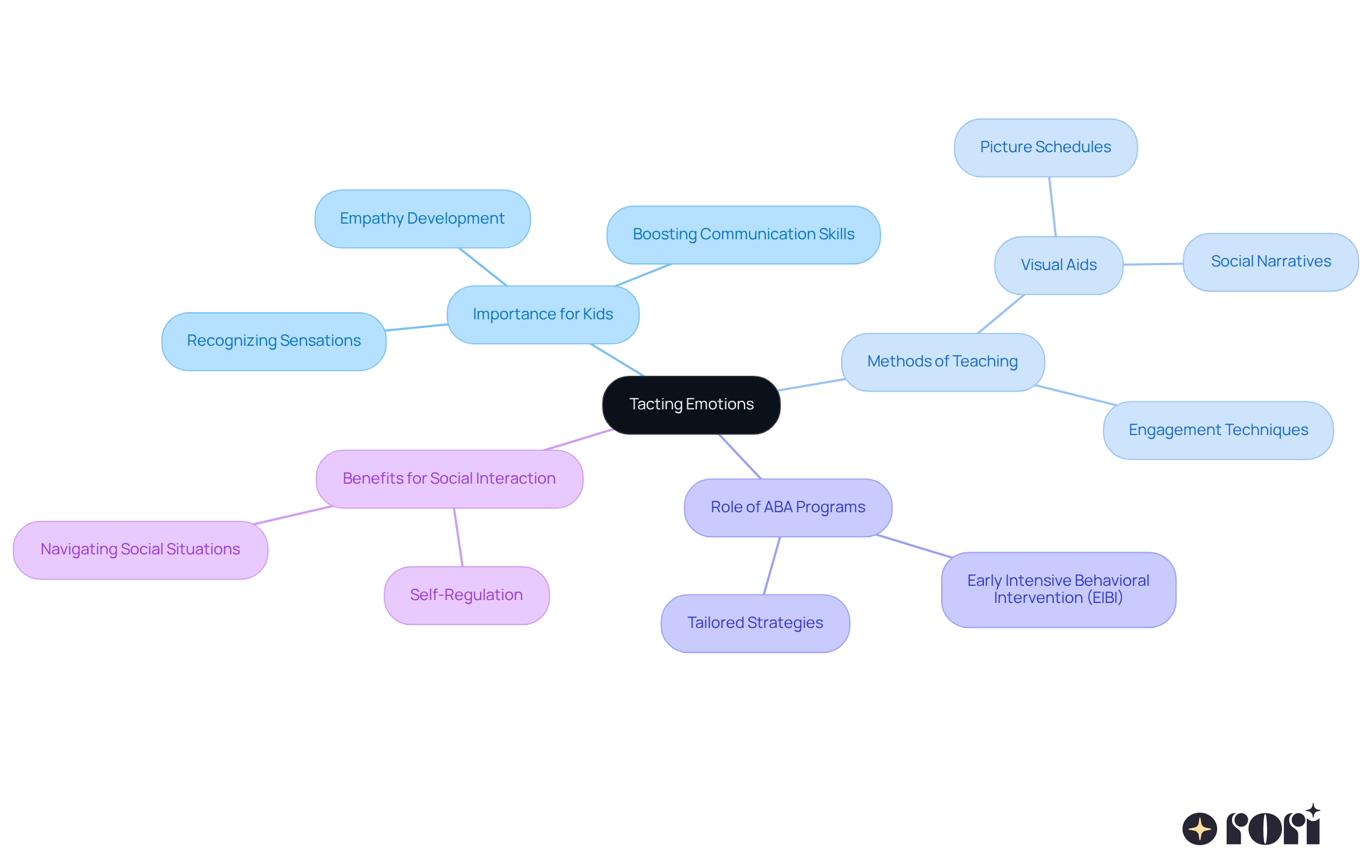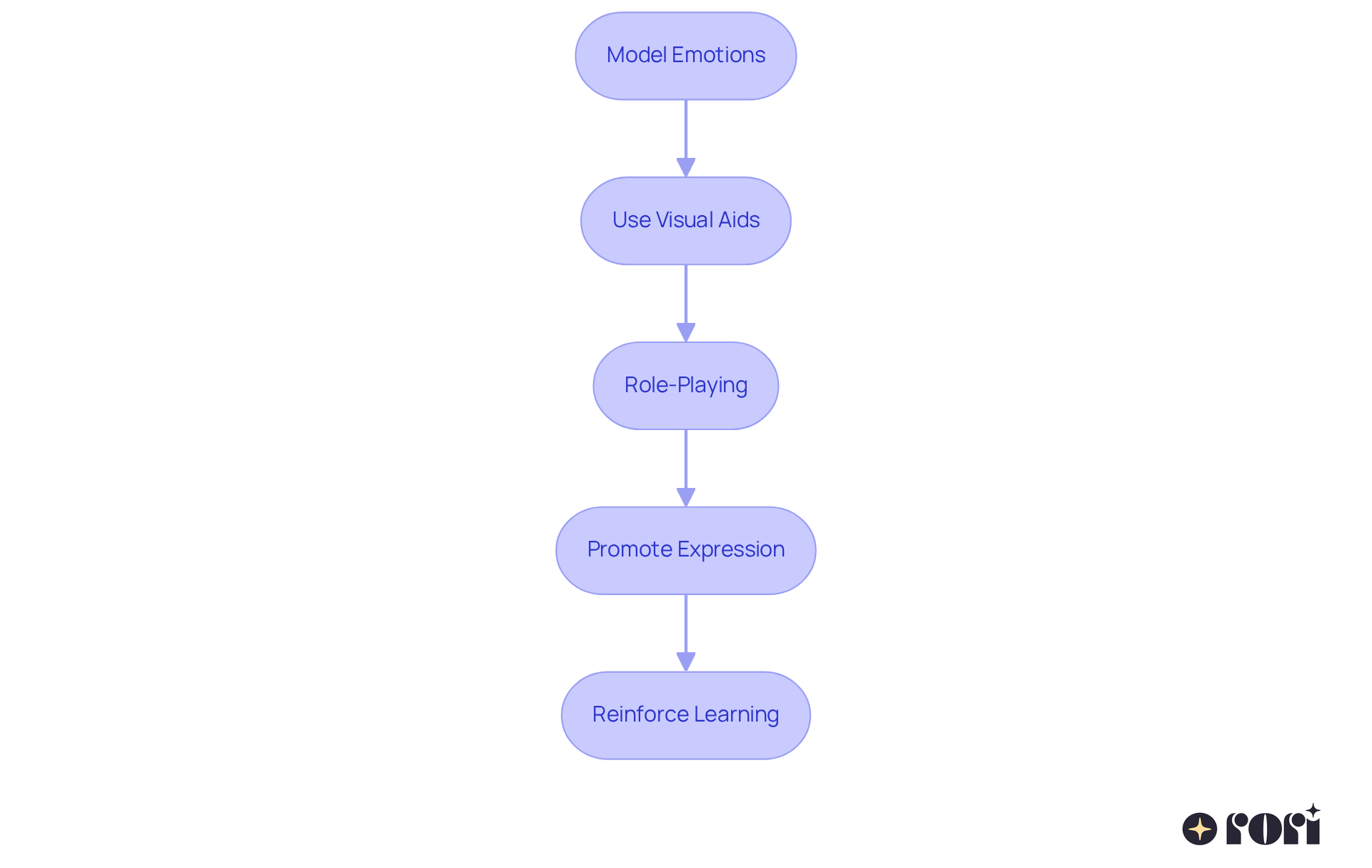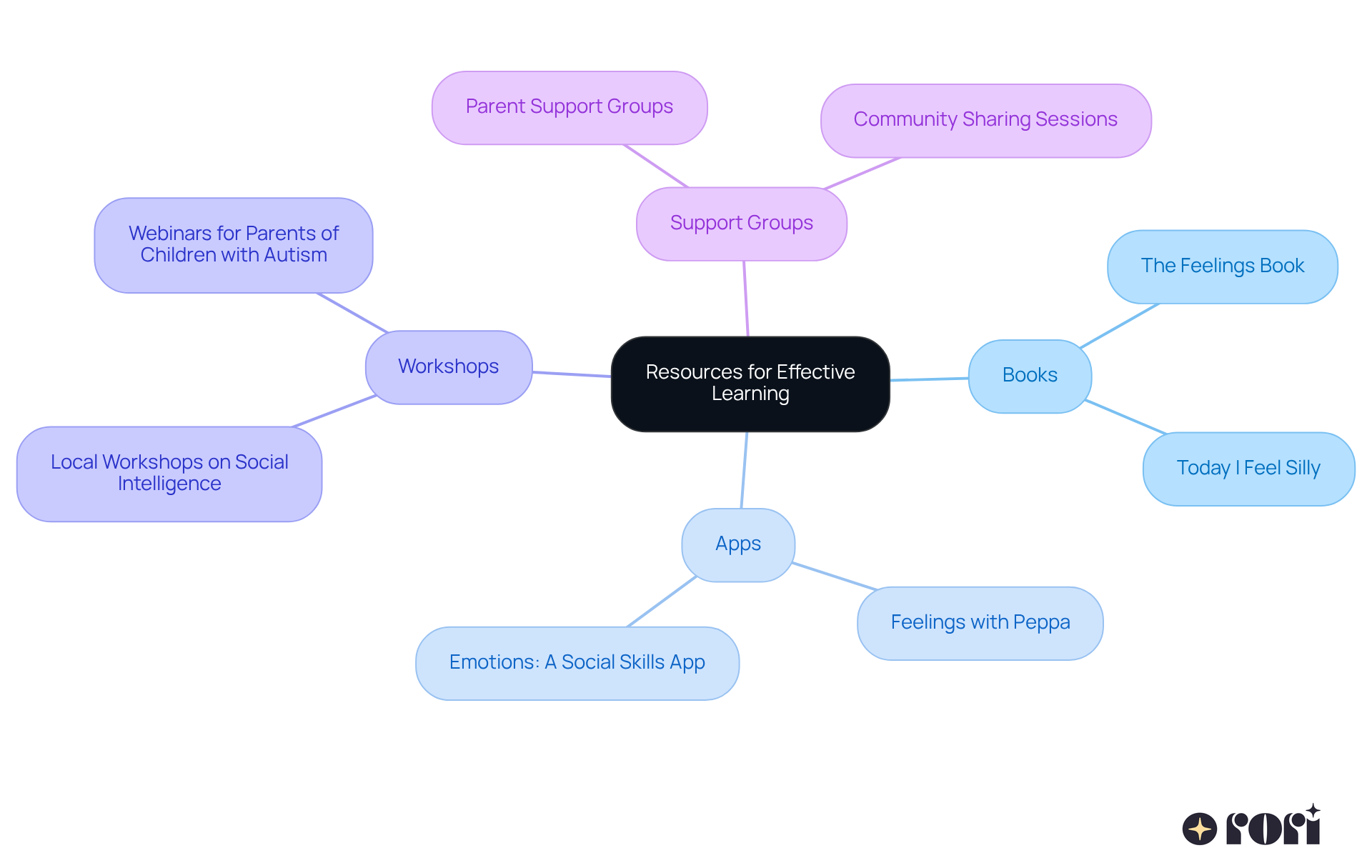This article highlights the significance of helping children, especially those on the autism spectrum, understand and express their emotions. It offers a straightforward guide for parents to teach this essential skill. By modeling emotions, using visual aids, and engaging in role-playing, parents can significantly boost their child’s emotional awareness. This awareness is vital for fostering social interactions and promoting overall well-being.
Let’s explore this together! Parents often face the challenge of connecting with their children on an emotional level. By sharing relatable experiences, we can deepen our understanding of how to approach this important task. Imagine a scenario where a child struggles to express frustration—how can we help them navigate those feelings?
The article encourages parents to take action by utilizing practical strategies. For instance, incorporating visual aids can make a world of difference. When parents actively engage in role-playing, it not only models emotional expression but also creates a safe space for children to practice their skills. This supportive environment fosters a sense of belonging and shared understanding.
As we wrap up, remember that enhancing emotional awareness is a journey. We’re here to help you every step of the way! By taking these steps, you’re not just teaching your child a skill; you’re building their confidence and social abilities for the future. Let’s continue this conversation—share your thoughts or experiences in the comments!
Understanding emotions is such an important part of child development, especially for kids on the autism spectrum. Recognizing and expressing feelings can truly shape how they interact with others and build relationships. This article is here to help parents with a step-by-step guide on how to teach their children to tact emotions effectively. By doing so, we can enhance their emotional intelligence and communication skills.
But what if your child has a hard time expressing or even recognizing their emotions? 🤔 Exploring the challenges and opportunities in tacting emotions can empower you as a parent to support your child's emotional growth in meaningful ways. Let’s explore this together!
Tacting emotions is all about recognizing and categorizing sensations, which is super important for kids, especially those on the autism spectrum. This skill helps them navigate social situations and build meaningful relationships. By teaching little ones to engage in tacting emotions, parents can help them identify feelings in themselves and others, nurture empathy, and boost communication skills.
Understanding emotions and tacting emotions is also key for self-regulation, helping kids manage their reactions in different situations. Programs based on Applied Behavior Analysis (ABA) principles really highlight the importance of early intensive behavioral intervention (EIBI) for enhancing learning, verbal, and social skills in children with autism. Plus, did you know that ABA therapy is the only scientifically proven treatment for autism that insurance covers?
Effective programs often use visual aids, like picture schedules and social narratives, to assist kids in tacting emotions and learning to recognize feelings. By equipping caregivers with the knowledge and skills to support their child's behavioral goals, these programs create a consistent and supportive environment that maximizes the impact of interventions.
With 1 in 36 children in the U.S. diagnosed with autism, tacting emotions is essential for empowering parents to support their child's emotional growth. This paves the way for better social interactions and overall well-being. Let’s explore this together and see how we can make a difference!

Model Emotions: Start by openly sharing your feelings! Use your facial expressions, tone of voice, and body language to show emotions. For example, you might say, 'I feel happy when we play together!' This simple practice helps your little one with tacting emotions by connecting words with feelings, boosting their emotional awareness and enhancing the support caregivers can provide through education.
Use Visual Aids: How about creating or using feeling cards that show different emotions like happy, sad, and angry? Present these cards to your child and chat about each feeling. Encourage them to share when they feel that way. Research shows that visual aids can really help kids with tacting emotions better, which leads to smarter decision-making based on a deeper grasp of ABA principles.
Role-Playing: Let’s dive into some role-playing! You and your child can act out various emotional scenarios. For instance, pretend you’re at a birthday party and express joy. Ask your child how they would feel in that situation. This helps them in tacting emotions to real-life experiences and can lead to better behavioral outcomes.
Promote Expression: Encourage your little one to share their feelings in different situations. Ask questions like, 'How did that make you feel?' or 'What do you think they are feeling?' This not only motivates them to express their emotions but also enhances their vocabulary related to feelings, which is essential for tacting emotions and provides caregivers with valuable tools to support their child’s growth.
Reinforce Learning: Remember to use positive reinforcement when your child recognizes or expresses a feeling! Praise their efforts to keep the practice going. This strengthens their emotional growth and boosts their confidence in tacting emotions, which ultimately reduces stress and improves family dynamics.

Lack of Interest: Engaging a young one who seems disinterested in emotions can be a fun challenge! Try incorporating their favorite activities. For example, use characters from beloved shows to talk about feelings. This makes learning enjoyable and relatable. With Rori Care's extensive support, caregivers can create engaging situations that resonate with their child's interests, enhancing support at home.
When a child finds it hard to understand feelings, keeping things simple is key. Use clear, relatable examples and introduce one emotion at a time to avoid overwhelming them. This approach lays a solid foundation for emotional understanding, crucial for their social development. Educating caregivers on ABA strategies at Rori Care helps you make informed decisions that positively impact your child's growth.
Inconsistent Responses: If your child struggles to recognize feelings consistently, practice makes perfect! Consistency is essential for reinforcing learning. Use daily scenarios to spark conversations about feelings, helping them connect their emotions to real-life experiences. Research shows that children who develop regulation skills in preschool are better equipped to handle social challenges later on. Engaging in these discussions, guided by ABA techniques from Rori Care, can lead to better behavioral outcomes.
Frustration: If your child gets frustrated during lessons, it’s perfectly okay to take a break. Understanding feelings can be tough, so approach it at a comfortable pace. Return to the activity when they feel more relaxed, ensuring a positive learning environment. As educators emphasize, responding positively to children's feelings builds trust and supports their emotional growth. Empowering caregivers with knowledge and strategies through Rori Care's ABA program can significantly ease stress and enhance family dynamics.

Books: Let's dive into some wonderful children's literature that highlights emotions! Books like 'The Feelings Book' by Todd Parr and 'Today I Feel Silly' by Jamie Lee Curtis are fantastic choices. When you read together, it sparks meaningful conversations about feelings, helping expand vocabulary related to tacting emotions and enhancing comprehension.
Apps: Have you tried using educational apps that teach kids how to recognize and manage their feelings? Apps like 'Feelings with Peppa' and 'Emotions: A Social Skills App' make learning fun! These interactive platforms equip young ones with practical tools for tacting emotions effectively.
Workshops: Consider joining local workshops or webinars that focus on social intelligence, particularly for those with autism. These sessions often feature insights from specialists, offering parents valuable strategies and techniques for tacting emotions to support their children's emotional development.
Support Groups: It can be so beneficial to connect with parent support groups! Sharing experiences and resources with other families creates a community that provides encouragement, practical advice, and fresh ideas for tacting emotions. Together, we can navigate the challenges of emotional education!

Mastering the art of tacting emotions is such an important journey for parents, especially when nurturing emotional intelligence in our little ones. This skill not only helps us recognize and categorize feelings but also fosters empathy and enhances communication. By engaging in tacting emotions, we can truly influence our child's ability to navigate social situations and build meaningful relationships, laying a solid foundation for their overall well-being.
In this guide, we’ve highlighted several key strategies to effectively teach children about emotions. From:
These techniques are crafted to make learning about feelings both engaging and relatable. Plus, by addressing common challenges—like lack of interest or frustration—we can ensure that the learning process remains positive and constructive, ultimately empowering our children to manage their emotions more effectively.
The significance of tacting emotions goes beyond just immediate interactions; it shapes our children's future social capabilities and emotional resilience. As parents and caregivers, embracing these strategies not only supports our child's emotional growth but also fosters stronger family dynamics. By investing our time and effort into teaching emotional recognition, we can help equip our children with essential skills that will benefit them throughout their lives. Let’s explore this together!
What is tacting emotions?
Tacting emotions involves recognizing and categorizing sensations, which is crucial for children, particularly those on the autism spectrum, as it helps them navigate social situations and build meaningful relationships.
Why is teaching tacting emotions important for children?
Teaching tacting emotions helps children identify feelings in themselves and others, nurtures empathy, and boosts communication skills, which are essential for social interactions and emotional growth.
How does tacting emotions contribute to self-regulation in children?
Tacting emotions aids in self-regulation by helping children manage their reactions in different situations, allowing them to respond more appropriately to various emotional contexts.
What role does Applied Behavior Analysis (ABA) play in teaching tacting emotions?
ABA emphasizes the importance of early intensive behavioral intervention (EIBI) for enhancing learning, verbal, and social skills in children with autism, including the development of tacting emotions.
Is ABA therapy covered by insurance?
Yes, ABA therapy is the only scientifically proven treatment for autism that is typically covered by insurance.
What tools are used in effective programs to teach tacting emotions?
Effective programs often utilize visual aids such as picture schedules and social narratives to assist children in recognizing and understanding emotions.
How can parents support their child's emotional growth through tacting emotions?
By understanding and teaching tacting emotions, parents can empower their children to enhance their emotional growth, which leads to better social interactions and overall well-being.
What is the prevalence of autism in children in the U.S.?
Currently, 1 in 36 children in the U.S. is diagnosed with autism, highlighting the importance of teaching skills like tacting emotions.